Ascorbic acid or vitamin C is an organic compound from the group of unsaturated polyhydric alcohol. Vitamin C is necessary for the functioning of all living organisms. For many animals and humans, this vitamin must be supplied in the diet because they are not produced by the organisms themselves. Ascorbic acid is an antioxidant used as a food additive (E300).
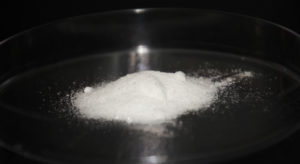 In the normal conditions it is a white, crystalline solid. Soluble in water, the solution is acidic.
In the normal conditions it is a white, crystalline solid. Soluble in water, the solution is acidic.
Other names of ascorbic acid:
- pour. Acidum ascorbicum;
- The antioxidants in the food industry: E300 – ascorbic acid, E301 – sodium ascorbate, E302 – calcium ascorbate, E303 – potassium ascorbate, E304 – fatty acid esters of ascorbic acid;
- (R) -3,4-dihydroxy-5 – ((S) -1,2-dihydroxyethyl) furan-2 (5H) -one;
ascorbic acid; - 2,3-didehydro-L-threo -heksono-1,4-lactone;
- 3-keto-L-gulofuranolakton
L-ascorbic acid occurs naturally in many plants and animals. In both realms substrate for the biosynthesis of this compound is D-glucose, but extends it in a different way[1].
Rich source of vitamin C are fresh fruits and vegetables: currants, strawberries, citrus fruits, cabbage, parsley, spinach, watercress, tomatoes and green peppers. Vitamin C, however, is anunstable product, its loss in the cooking process reach 50-70%[2], is also gets oxidized so it is best to eat fruits and vegetables fresh and raw. Check: What is the content of Vitamin C in fruit and vegetables?
The role of vitamin C in the human body
Vitamin C plays a very important role in the functioning of the human body[10]:
- Increases immunity, especially during intensive physical activity, stimulates the immune system.
- Supports functioning of the cardiovascular system: lowers blood pressure, dilates blood vessels and protects against atherosclerosis.
- Acts as an antioxidant[11], as it is involved in neutralizing reactive oxygen and nitrogen thus preventing damage to cells and protects their macromolecules against oxidative damage. It also participates in DNA repair. It removes free radicals, protecting the body against tumor lesions.
- It supports the production of cholesterol in the liver and processing it into bile acids – raises levels of “good” cholesterol and lowers the “bad” one. It also regulates the level of glucose in the blood.
- Positively affects the nervous system, regulates the production of cortisol (hydroxycortisol) steroid hormone produced by the adrenal cortex (ie. A stress hormone), it helps to concentrate.
- It participates in the metabolism of tyrosine synthesis of adrenal steroids. It has also impact on maintaining of appropriate oxidative potential in the cell[1].
Recommended intake of vitamin C for an adult is from 45 to 90 mg per day.
The effects of vitamin C defficiency in the human body
The most well-known consequence of vitamin C deficiency is scurvy[3], whose symptoms are spontaneous bleeding, damage to blood vessels, blood ecchymosis, poor healing and repair of wounds, looseness of gums, inflammation of the mucous membranes, changes in teeth (eg. Gangrene), joint and muscle pains, swelling of the extremities, weakness, loss of appetite, reduced physical efficiency. Other serious consequences of this disease include depression, osteoporosis, anaemia Microcytic Hypochromic, overactive thyroid, neurological disorders, stomach afflictions. This may result in an extending the periods of chills and difficulties in treating infections, as well as secondary infections. If left untreated, it can even lead to death.
The effects of excess / overdose of vitamin C
Vitamin C (ascorbic acid) is not toxic, but taken in excessive doses (more than 2 g per day) can cause stomach problems (nausea, diarrhea, vomiting), skin rash. Putting away the medicine radically can cause decreased immunity. Normally however, the excess of vitamin is excreted from the body with urine. In the event of the diagnosed existence or tendency to the formation of kidney stones it is not recommended to consume doses greater than 500 mg per day. Excess Vitamin C is converted to:
- Oxalic acid[8], which in the urinary tract precipitates with calcium in the form of stone (calcium oxalate), or
- uric acid,[9] (white crystals hardly soluble in water)[4].
The harmfulness of taking higher than recommended doses of vitamin C during pregnancy has not been confirmed in clinical research.
Megadoses of vitamin C
The application of the so-called mega-doses of vitamin C is controversial, as scientific commuinity, doctors and those involved in natural methods of treatment do not comment on the issue unequivocally. The pharmaceutical industry and doctors do not recommend this type of therapy, while some scientists and physicians encourage to apply it in a number of very serious diseases. Below we present the views of several of them:
- According to the winner of two Nobel Prizes, a writer, chemist and physicist Dr. Linus Pauling[5] the daily intake of vitamin C by an adult should vary between 3g to 18g. In one of his last interviews before death, he stated, among others, “I think that today we can completely control cardiovascular disease, heart attacks and strokes through the proper use of vitamin C and lysine. Not only that this way we can prevent cardiovascular disorders, but even cure them. If you belong to a group with the so-called increased risk of heart disease or have experienced heart attack in the past, it will be better for you, if you start taking vitamin C and lysine. (…) “.
- According to Dr. Mathias Rath[6] a lack of vitamin C increases the risk of coronary heart disease.The greater consumption in turn increases the level of “good” HDL cholesterol, and removes excess of the “bad” one- LDL. Dr. M. Rath recommended dose of 3g to 10g of natural vitamin C a day, claiming that in this way you can cause a reversal of atherosclerosis processes . Vitamin C deficiency leads to disruption of the body’s immune resistance to infections and to the impact of some toxins. Its high level in the body facilitates creating maximum glycogen supplies in liver and strengthens its detoxificating ability. This is of great importance in any parasitic infections (fungi, bacteria, Helminthiasis), in body intoxication by chemical toxins, or in all types of viral hepatitis.
- According to Dr. Clark[7] Vitamin C helps neutralize all mold mycotoxins (toxins derived from fungi), including a very poisonous – aflatoxin.
- Dr. Robert F. Cathcart developed detailed treatment of many diseases with mega-doses of ascorbic acid, including allergies, bacterial diseases and even cancer[12][13][14][15][16][17].
The proponents of treatment and prophylaxis with the use of mega-doses of vitamin C are convinced of its efficiency. Opponents warn against possible adverse effects. There are still not enough reliable sources supported by research, which would undeniably confirm or contradict the possible impact of taking ascorbic acid in high doses on humans’ health.
References & External links
- Vitamin C – L-ascorbic acid – https://en.wikipedia.org/wiki/Vitamin_C
- Kalina Maćkowiak, Lech Torliński – “Współczesne poglądy na rolę witaminy C w fizjologii i patologii człowieka”, Nowiny Lekarskie 2007, 76, 4, 349-356, Zając M.: “Witaminy i mikroelementy”. Wyd. Kontekst, 2000, 29–37, Gertig H., Przysławski J.: “Bromatologia – zarys nauki o żywieniu i żywności”. Wyd. Lek. PZWL, 2006, 164-170.
- Scurvy is a disease resulting from a deficiency of vitamin C. – SCURVY: How a Surgeon, a Mariner, and a Gentleman Discovered the Greatest Medical Mystery of the Age of Sail by Stephen R. Bown. Published by Thomas Dunne Books 2004.
The history of scurvy & vitamin C. by Kenneth J. Carpenter. Published by Cambridge University Press 1986.
- LK. Massey, M. Liebman, SA. Kynast-Gales. Ascorbate increases human oxaluria and kidney stone risk. „J Nutr”. 135 (7), s. 1673-1677, 2005. PMID: 15987848.
- Linus Pauling – https://pl.wikipedia.org/wiki/Linus_Pauling.
- Matthias Rath – https://en.wikipedia.org/wiki/Matthias_Rath, “Zwycięstow nad rakiem cz.1 i cz.2” – Matthias Rath Aleksandra Niedzwiedzki, ISBN: 9789076332789, ISBN: 9789076332796, Wydawca: Dr. Rath Education Services B.V., “Dlaczego zwierzęta nie dostają zawałów serca tylko my ludzie” – Matthias Rath, Wydawca: Dr. Rath Education Services B.V., “Dowody” – Matthias Rath, ISBN: 9789076332819.
- Hulda Regehr Clark – https://en.wikipedia.org/wiki/Hulda_Regehr_Clark, The Three Owls Reading Method (1965–67), The Cure for All Cancers (1993), The Cure For HIV / AIDS (1993), The Cure for All Diseases (1995, ISBN 978-1-890035-01-3), The Cure For All Advanced Cancers (San Diego, CA: ProMotion Publishing, 1993), Syncrometer Science Laboratory Manual (2000), The Prevention of all Cancers (2004), The Cure and Prevention of All Cancers (2007).
- Oxalic acid (ethanedioic acid), HOOC-COOH – an organic compound, the simplest dicarboxylic acid. In large concentrations the oxalic acid is irritating to the skin and mucous membranes, but even in the amounts found in food may be harmful – combined with the ions of calcium it creates a sparingly soluble calcium oxalate, which is deposited in the form of kidney stones. Therefore, frequent consumption of large amounts of vegetables containing the acid can cause kidney stones, and calcium deficiency in the body.
- Uric acid (2,6,8-trioksypuryna) – an organic chemical compound, a purine derivative. Forms white crystals poorly soluble in water. The concentration of uric acid in the blood of healthy people is 180-420 mmol / L (3-7 mg / dl). In the urine discharged from the average of 500 mg uric acid per day in free form or in salt form (depending on the pH of urine). Uric acid is poorly soluble in water and in an acidic environment can accumulate in the joints causing gout and in kidneys forming gouty stones.
- Vitamin C – Fact Sheet for Health Professionals, https://www.nlm.nih.gov/medlineplus/vitaminc.html.
- Antyoksydanty – http://www.cancer.gov/about-cancer/causes-prevention/risk/diet/antioxidants-fact-sheet, https://www.nlm.nih.gov/medlineplus/antioxidants.html.
- Cathcart R.F. The method of determining proper doses of vitamin C for the treatment of disease by titrating to bowel tolerance. J. Orthomolecular Psychiatry, 10:125-132, 1981.
- Cathcart R.F. Vitamin C: titrating to bowel tolerance, anascorbemia, and acute induced scurvy. Medical Hypotheses, 7:1359-1376, 1981.
- Cathcart R.F. Vitamin C in the treatment of acquired immune deficiency syndrome (AIDS). Medical Hypotheses, 14(4):423-433, Aug 1984.
- Cathcart R.F. The vitamin C treatment of allergy and the normally unprimed state of antibodies. Medical Hypotheses. 1986 Nov;21(3):307-21.
- Cathcart R.F. Vitamin C function in AIDS. Current Opinion, Medical Tribune, July 13, 1983.
- Cathcart R.F. Vitamin C: the nontoxic, nonrate-limited, antioxidant free radical scavenger. Medical Hypotheses, 18:61-77, 1985.
Recommended supplements of Vitamin C
Translations
| The article "Vitamin C – L-ascorbic acid" in other languages | |
|---|---|
| Witamina C – Kwas L-askorbinowy po Polsku: Witamina C – Kwas L-askorbinowy |  |


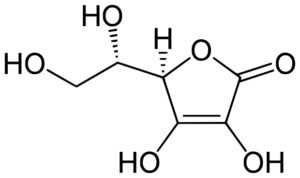
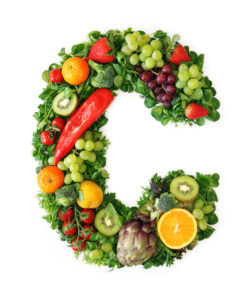
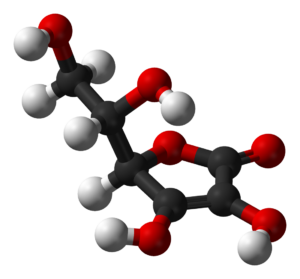
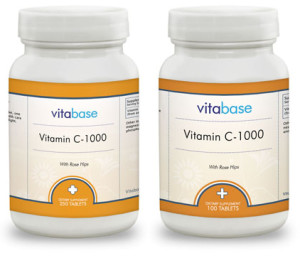
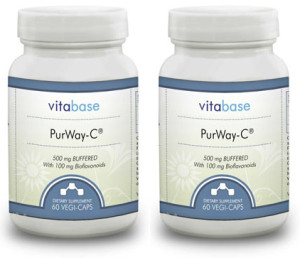


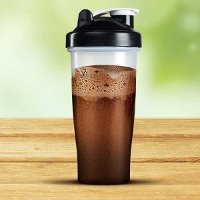




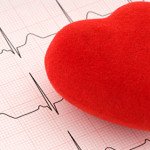

Comments
“Vitamin C – L-ascorbic acid”